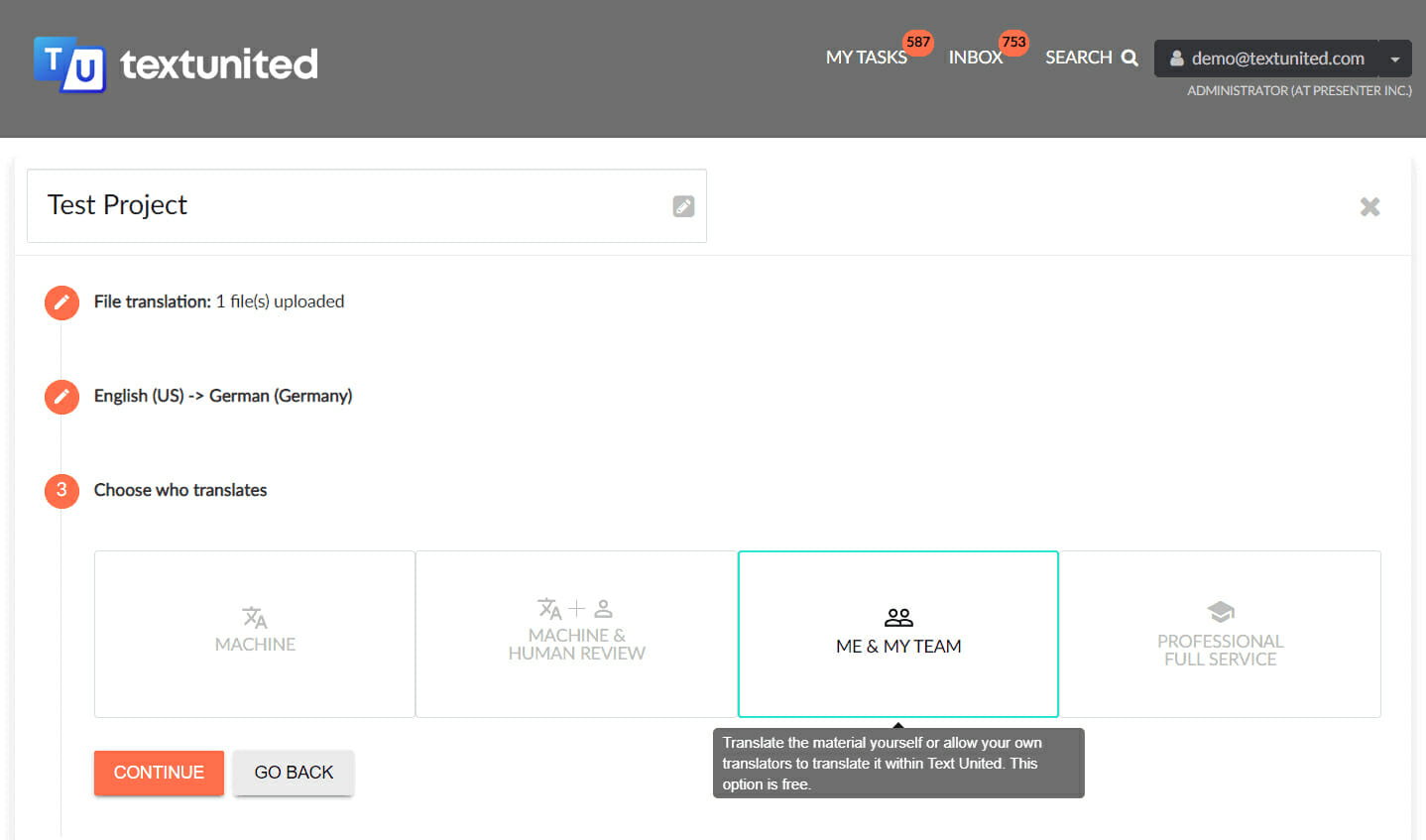Here at TextUnited, we understand that translation projects can become complex, costly and time-consuming.
As well as this, cluttered and unclear procedures can cause huge amounts of undue stress! With that in mind, we’re taking it back to basics with some simple advice to help you create a clean, streamlined translation workflow that will save you both time and money.
#1. Define your translation process
Sounds simple, right? Yet many companies fail to have a standard process in place when it comes to translation and localization.
The right process will, of course, depend on several factors, such as the size of your business and the typical scale of your translation projects. Let’s say, for instance, that your current approach is to hire freelance translators, as and when the need arises. In itself, there is nothing wrong with this. If this is all being done via email trails, however, it can get very confusing and leave you open to errors and missed deadlines; not to mention the pressure this puts on individual members of staff. Collaboration tools such as Slack, Trello and Asana can help with this, connecting teammates and making it easier to track progress.
Using a Translation Management System – like TextUnited – enables you to map entire processes easily and overcome challenges like the ones above, hassle-free. Ultimately, though, the route you take is yours to choose. The important thing is that you have this route mapped out, so that everybody working on the project has a clear procedure to follow.
For more help finding the option that best suits your needs, check out our Ultimate Guide to Website Translation.
#2. Uniformity with flexibility
While it’s key to have a go-to process for staff to refer to, that’s not to say you can’t adapt the process to the specifics of an individual project. Our clients come to us at varying stages of their global journey. Some prefer to outsource everything to us, while some already have subsidiaries or partner companies in other countries that handle certain aspects of the process. In cases like this, you can use our system to collaborate, whilst assigning the translation to your existing connections.
There are a variety of ways in which you can save on translation costs without compromising on quality, not least of which is an efficient workflow. If you’re reading this because your company’s international presence is growing, spend time adapting or even overhauling your current procedures to meet this new demand. The spiritual among you may have heard the phrase: “Let go of that which no longer serves you” – although you probably never thought you’d read it as part of an article about translation workflow. Nevertheless, it applies just as much here as it does on the yoga mat.
#3. Be consistent
Not only can manual translation be a long and arduous task, it can also make it harder to maintain a brand profile that feels the same in every country. Machine translation often brings up negative connotations, but it’s near impossible for a human to be as consistent as a machine – even the most highly skilled of us!
Translation automation can be an ideal way to ensure consistency across multilingual content. We’ve explored translation memory and terminology management in some of our previous blogs and will reiterate their importance again. The other bonus is that these methods can cut out a huge chunk of the workload, thus massively improving cost efficiency.
To illustrate: let’s say you’re working with an updated file that’s pretty lengthy and was originally translated just a few months ago. Now, this new file has only a few differences. Working manually, you’d need to go over both files with a fine tooth-comb, ensuring your new translations were consistent with the vocabulary used previously and checking for linguistic and grammatical errors. Translation memory and terminology features can do this for you in a fraction of the time and make sure that everybody working on your translations will use company-specific terms.
When outsourcing any translation project to an external provider, look out for these features, as well as a Quality Assurance tool. Translation and localization should never be rushed, but we understand that budgets and time constraints do exist. With these features, you can save time and money, whilst maintaining the face of your brand across the globe.
We also recommend creating a Style Guide, which essentially functions as a set of rules for things like spelling, language and formatting. Terminology functions as part of this. While native speakers can offer the benefit of a relatable voice to your target market, leaving too much open to interpretation is going to lead to inconsistencies, making you appear less credible to consumers.
#4. Collaboration is key
Collaboration promotes accuracy, consistency and communication. Gone are the days when your staff had to manage an influx of emails from multiple freelance translators, each specializing in a different language. How are you going to achieve brand unity, when each translator is working at a different pace and communicating a slightly different message because they lack the full context?
With a centralized platform like ours, all stakeholders can communicate freely, leading to a seamless and harmonious workflow. As well as this, the project manager can easily put across their vision, then stay abreast of the translations as they happen and make suggestions along the way. That means, zero risk of missing the mark with brand identity, even when you work with external parties. From the conception of a piece of content to its existence on a multilingual platform, everyone is on the same page. No back and forth, no complicated supply chain.
The end result? Your customers benefit and, in turn, so do you.
#5. Avoid workplace silos
To finish up, here’s a piece of advice that follows naturally from our last. If collaboration is key, then knowledge shared is knowledge multiplied infinitely.
Firstly: it’s not enough to have just one expert, no matter how talented they may be. For one, it’s likely that handling all the translation aspects of the business – even with outsourcing – is going to become too great a responsibility as global interest grows. Or worse, what happens if this person leaves the company? Even in the best case scenario, training up their successor is going to be a mammoth task, and things are likely to be missed, leaving you in a tricky situation when challenges arise in the future. Making sure that everyone is up to speed means it’s far less likely that past mistakes are going to be repeated.
Secondly: getting all of your staff on board with globalization will make for a far less bumpy ride. Developers and content creators, for instance, can help you to prepare for translation and localization from the very beginning, making the job much easier down the line. The more people understand about the overall process, the better a position they will be in to aid it. In other words: more transparency, more efficiency.
How can we help?
At TextUnited, we pride ourselves on the ability to facilitate optimized, scalable workflows, no matter the type of translation or the languages involved. As well as our Translation Memory and Terminology Management features, our system supports over three dozen file formats, meaning you don’t have to worry about the type of content being imported or how it will be handled by us.
As well as this, we stand by our tried and tested combination of machine translation and human review for accurate and consistent results. Process automation makes for fast delivery and translation integrations allow us to work in tandem with your current systems, as an easily compatible component in your existing tech stack.
We want to help you work smarter, not harder. That’s why our intuitive UI is built with you in mind. Better yet, why not get in touch with one of our experts today, to find out how your company could benefit from our TMS?




